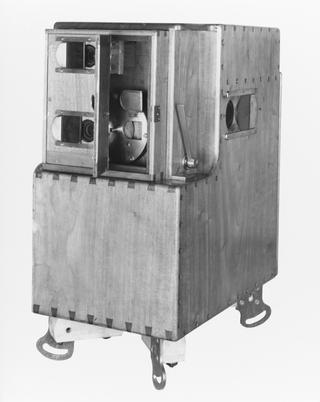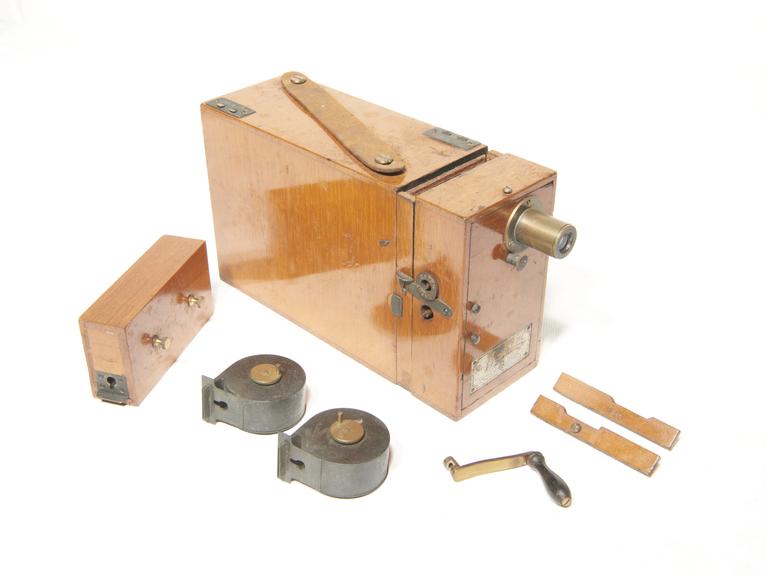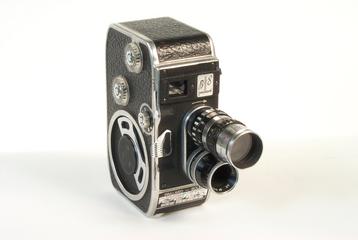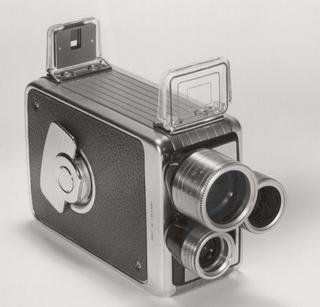
Biokam 17.5mm Cinematograph and Snapshot Camera

Biokam 17.5mm cinematograph and snapshot camera, printer and projector, mahogany body, with Voigtländer Euryscop 35mm. F/7.7 lens, wooden film magazine, two metal film magazines and crank handle. (IN 5 PARTS)
One 'Biokam' ciné camera of early make. The Biokam Combined Camera and Projector was manufactured in Britain from 1899 onwards. The mechanism was made by Alfred Darling in Brighton.
One of the earliest amateur cine devices, the Biokam could be used as a movie or stills camera, projector, printer and enlarger. It used 17.5mm film with central perforations between frames (like the later 9.5mm film).
One of the earliest amateur cine devices, the Biokam was demonstrated by T C Hepworth at the London Camera Club on 24th March 1899, where it was advertised as ‘A combined Cinematograph & Snap-Shot Camera, Printer, Projector, Reverser and Enlarger’. It used 17.5mm film with central perforations between frames (like the later 9.5mm film). The film box had two separate compartments, so that two rolls of film could be exposed in succession. The mechanism unit could be converted into a printer, and with the addition of a light source, into a projector. Distributed by the Warwick Trading Company, the full outfit cost eleven guineas (£11.55).
Details
- Category:
- Cinematography
- Collection:
- Feroze Sarosh Collection
- Object Number:
- 2007-5005/9
- type:
- cine camera/projector
- credit:
- The National Media Museum, Bradford




